Understanding your target audience part 1: keyword research
In the first part of a series of articles, Richard Baxter shares techniques for keyword research
The consumer buying process online is an evolving subject and a critical point of interest for digital marketers.
Increasingly complex search results offer users multiple routes to discovering their perfect content. Users' social connections are becoming an important source of influence in the decision-making process, too.
It's vitally important for us to understand where user discovery routes begin and how social may further influence the journey.
In this article, one of a series of inbound marketing and SEO blog posts for .net, I'm going to explore the basics of that process and discuss useful tools to help you gain more understanding of how your target audience uses search engines to make purchases online.
What's keyword research?
The subject of user behaviour research, keyword research or search profiling is a relatively broad topic. It's possible, with a handful of free tools or a good developer, to fetch data that tells us what common search terms people use in their day to day use of search engines. We can see what people are discussing online, understand the sentiment used during the conversation and see what websites and resources are being shared. Social media allows us to locate our customers, too.
The search decision funnel
Imagine search as a decision funnel where organic search presents one or two of many touch points in a customer journey. Beginning the research process, a customer may begin with an informational search query. As the customer becomes more aware of the products or services on offer, the search queries evolve to become more navigational.
To assist in making a purchase decision, a customer could ask a friend and read a review on their desired purchase before navigating back to the point of purchase and buying.
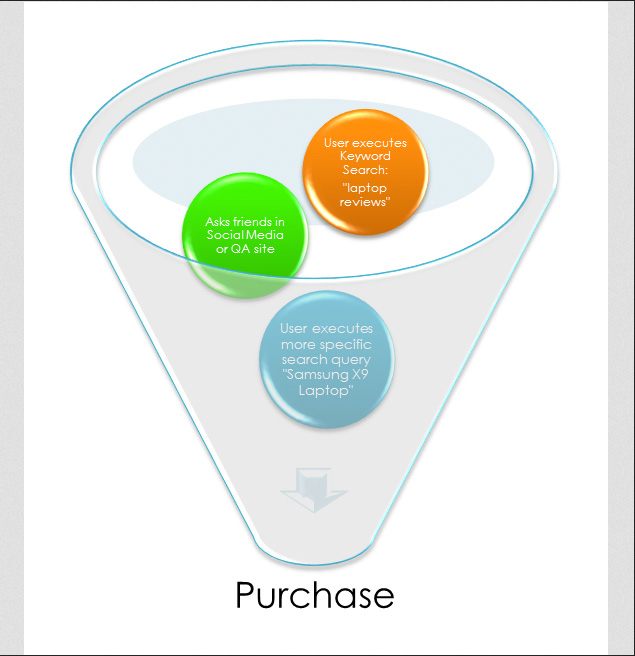
Here's that process as it happens in search and social media:
Get the Creative Bloq Newsletter
Daily design news, reviews, how-tos and more, as picked by the editors.

Speaking the right language‚ finding the right keywords
Of course, you've got to be visible in search to stand a chance of being discovered. Understanding how your customers use search engines to find your products, services, blog posts, or any other content you may have available to share, is a critical component of your inbound marketing efforts. Keyword research is such a powerful skill and allows the search marketer to size and prioritise their efforts, while keeping a keen eye on the behaviour of their users.
Let's take a look at the theory and the practice of keywords, organising them into meaningful campaign categories and translating those categories into decisions about your site architecture.
Keyword research in four simple steps
My process for keyword research falls into four simple steps:

Gather your raw materials
There are a variety of tools available to start gathering your raw materials and generating keyword ideas. Some are provided by the search engine companies themselves while others are provided as a service specifically for search marketers.
Our goal in the keyword gathering stage is to attempt to build a full and complete list. With a complete list, you can gain certainty that you're not missing out on an important keyword opportunity.
Start with your own analytics data. Try exporting the first 1,000 referring keywords from Google organic search and build a list in Excel.
A really smart way to build a list is to get as much relevant data as you can, and de-duplicate as you go. Back in July, we looked at my 30 best SEO tools. Here's a revisit of some of those tools, and some new tools you could visit to build your keyword list: Among the most 'classic' keyword research tools is the Google Adwords Keyword Tool.
Unfortunately, the Google Keyword Tool is in the process of being closed; in its place, Google announced the Keyword Planner, which has much of the data available from the original keyword tool and is able to suggest terms you may be interested in, which are related to your original queries.

If you're looking for even more keyword ideas, try Google Suggest API based tools like Ubersuggest or our new favorite, SEO Chat's Keyword Suggest Tool:
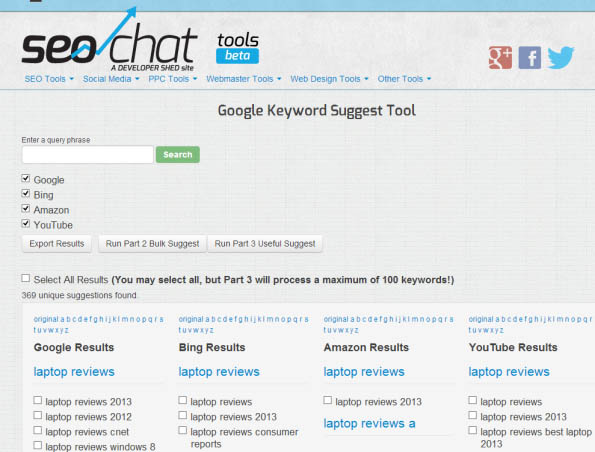
If you're building a serious data set, the smart money's in combining different data points for extra validation. Finding low competition, high volume keywords is every search marketer's Holy Grail. For that quest, Moz's Keyword Difficulty Tool can help estimate search volumes and combines data aggregated from Bing, rankings for that particular keyword by location and Moz's own link data source, Mozscape. Bing Webmaster Tools has a really handy keyword tool, showing your average ranking positions, the number of clicks you received, and the number of impressions for that particular keyword. You could download that data and easily add it to your data set.
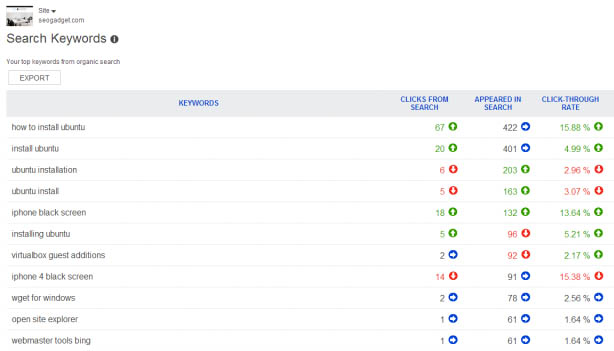
Google Analytics provides webmaster-tools-style query data, showing the key phrases your site ranks for in organic search, and the number of impressions your site listing appeared for. By selecting 'country' as your secondary dimension, you can drill down to some very useful snippets of information.
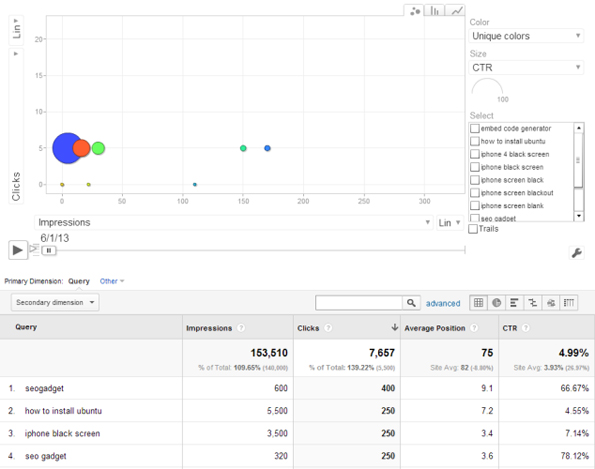
Lately, we've been playing a lot more with SEMrush, which has (as far as our agency is concerned, a great source of keyword search data both through their very usable UI and solid API offering). If you're keen to understand your competitor's target terms, both via paid search and organic, this is a great place to start:
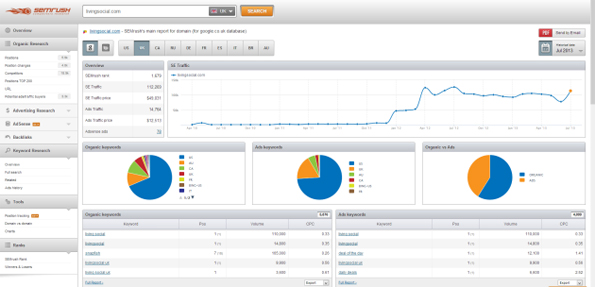
Our friends at Moz are building some impressive competitive keyword tracking tools into its analytics platform. Hidden away in its keyword and ranking tools is the very nifty 'Keyword Difficulty Tool'. This part of its platform can be used to find out how competitive the keywords you're targeting may be, based on the number of links you'll need to rank well in organic search.
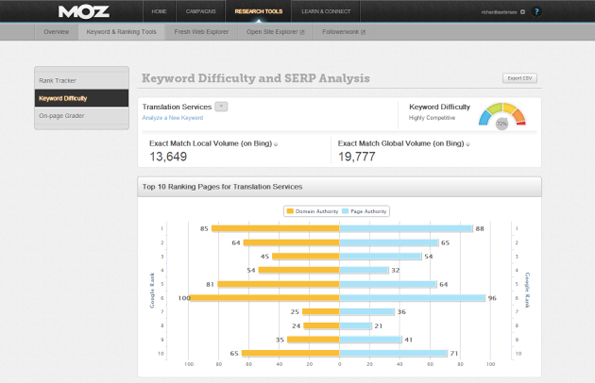
Building a categorised report
So, there are lots of new tools to help you get keyword data, but what next? When you're designing your site navigation, you may want to consider linking to pages with the highest likely search volume potential. Imagine for a moment, you're a website that sells used cars and you categorise by brand. Which of your brand pages should be linked to from your homepage? Keyword categorisation answers precisely that question. A simple methodology to group your keywords together is to use Excel filters.
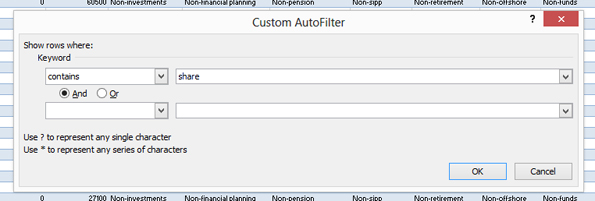
Create a custom filter, then your data is ready to go into a chart. Here's a simple example created for a website specialising in share trading:
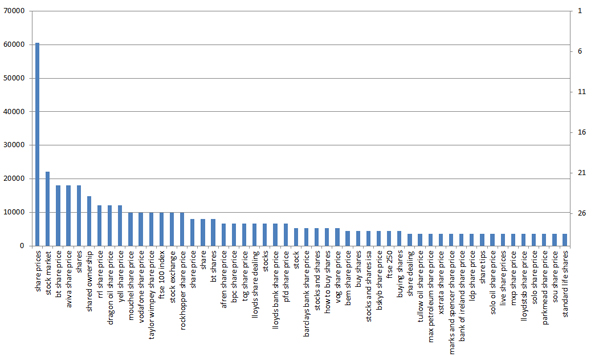
In our example above, 'share price' would be a great top term to target. So, in site architecture terms, you'd want to consider creating a top level category on your website called 'share prices'. As you're designing your navigation, work down the keyword list in search volume order, picking out the keywords you'll need pages for. If you'd like a more advanced write up on keyword categorisation, give this post on Moz a try: keyword research using categories in Excel, or check out this video, recorded at SES London back in 2012 (it's still quite relevant today!):
Making the data 'actionable', and next steps
So, you've collected keyword data and learned how to group it by sentiment: informational, transactional and possibly, navigational queries. Next, you're going to need a website that ranks for those queries. We call this site architecture and content strategy.
In an upcoming article, we'll be addressing some of the basics of content strategy, including how to organise what you've learned from your data into a meaningful site architecture.

Thank you for reading 5 articles this month* Join now for unlimited access
Enjoy your first month for just £1 / $1 / €1
*Read 5 free articles per month without a subscription

Join now for unlimited access
Try first month for just £1 / $1 / €1
The Creative Bloq team is made up of a group of design fans, and has changed and evolved since Creative Bloq began back in 2012. The current website team consists of eight full-time members of staff: Editor Georgia Coggan, Deputy Editor Rosie Hilder, Ecommerce Editor Beren Neale, Senior News Editor Daniel Piper, Editor, Digital Art and 3D Ian Dean, Tech Reviews Editor Erlingur Einarsson, Ecommerce Writer Beth Nicholls and Staff Writer Natalie Fear, as well as a roster of freelancers from around the world. The ImagineFX magazine team also pitch in, ensuring that content from leading digital art publication ImagineFX is represented on Creative Bloq.
